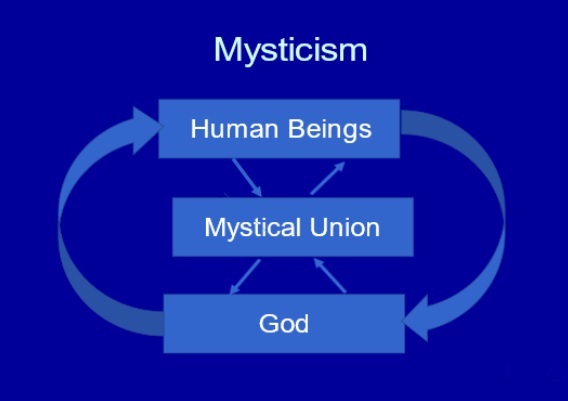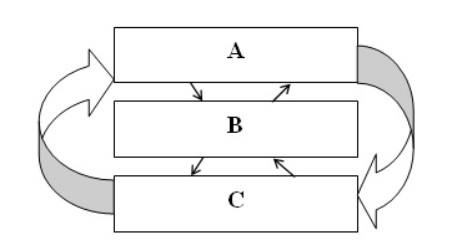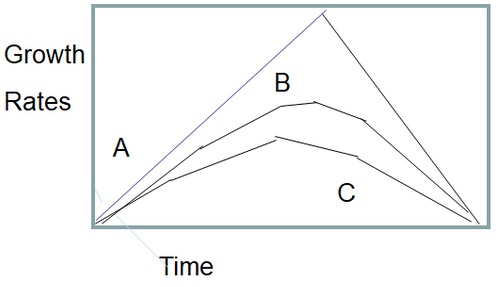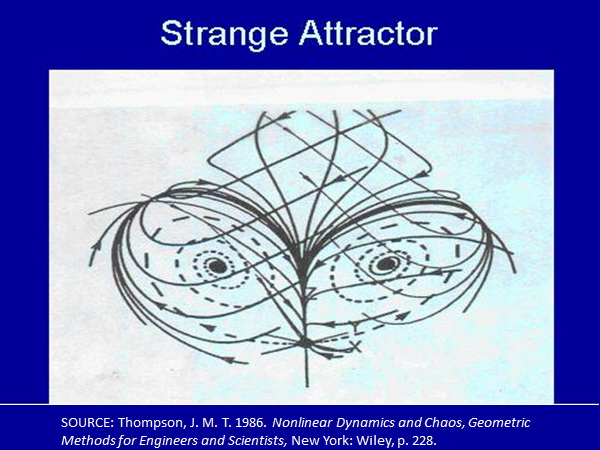Introduction
John Lukacs famously said that we are At the End of an Age (2002). The signs are everywhere: In most disciplines it is openly admitted that Rationalism is no longer capable of meeting our intellectual and practical needs.
My fifty years of independent, interdisciplinary research confirm that we are at the beginning of a new age:
The Age of Relationalism.
To give an immediate impression of the core of the issues, I must note that the difference between Rationalism and Relationalism is composed of two letters, EL.
EL is the Jewish symbol for the Divinity, an integral part of Relationalism. Obviously, EL might also be assumed to be the secular symbol for Infinity.
Rationalism is not negated; Rationalism is fully embraced by Relationalism. Relationalism is Rationalism in full bloom.
The Relational Method of Analysis
Relationalism is not an arbitrary creation of my mind; Relationalism grows out of the faithful application of the
Relational Method of Analysis. Those who know, know that the field is embroiled in controversy. The ruling statement is still that of Paul Feyerabend: Against Method (1975). Any ad hoc method goes.
There are two planks to this method: Relational Logic and Relational Epistemology.
Relational Logic is composed of three age-old principles: The Principle of Identity, the Principle of Non-Contradiction, and the Principle of Equivalence.
Relational Epistemology is composed of these epistemic tools: names, ideas, concepts, theories, systems of thought, processes (the dynamic analysis of systems of thought).
With his definition of “concept,” Kant landed my analysis of mainstream economics onto terra firma.
Using all the tools of epistemology, I constructed The Economic Process (2002, 2009, 2016). This is my fundamental book, about which, in its—second—annotation, the Journal of Economic Literature (December 2017, p. 1642) states: "Expanded third edition presents the transformation of economic theory into Concordian economics, shifting the understanding of the economic system from a mechanical, Newtonian entity to a more dynamic, relational process.”
Over time, I have had the opportunity to apply the Relational Method of Analysis to numerous intellectual disciplines. This method has consistently yielded positive results. Here is a short list of my forays, with a shorter list of the results I have obtained.
In Mathematics
Applied to mathematics, this method yields the equivalence of Zero to One and to Infinity. From mere numbers, these three entities are transformed into concepts, concepts that have been studiously defined in a variety of disciplines. Recognizing this affinity, we might gradually heal the broken core of the “two cultures.” Also, mathematicians will eventually recognize that science measures only one third of (even the mathematical) Reality. “One” can be measured from minus one to plus one; “zero” and “infinity” cannot be measured.
In Physics
Applied to physics, this method yields the equivalence of Matter to Energy and to Spirit. This is a second process that brings a healing to the “two cultures.” Materialism is affirmed, but it is always kept in balance with energy and spirit. Matter alone is inert; matter is indeed energized by energy. Yet exploitative energy exposes us to many dangers, some of which are more clearly appearing on the horizon. It is spiritual energy which is our salvation; only if we recapture the ancestral understanding of Mother Earth as sacred, only then shall we be safe.
In Economics
Applied to economics, this method yields the equivalence of Production to Distribution and to Consumption. The economic process is instantiated even in the purchase of a chocolate bar: A real good that, using natural resources, has somehow been produced is exchanged for money, which is thus “consumed.” The sales slip is evidence of the process of distribution (of the value of ownership rights). Pace Jefferson, property of the sales slip allows us to skip jail.
In Jurisprudence
Applied to jurisprudence, this method yields the equivalence of Participative Justice to Distributive Justice and to Commutative Justice. Only if we participate in the economic process can we rest assured of a fair distribution of the profits derived from our economics activities. Only then will we have resources for an equitable exchange (commutation) of what we give and what we receive.
In Sociology
Applied to sociology, this method yields the equivalence of Individualism to Somism and to Collectivism. Somism stands for Aristotelian “men and women in the social context.” The individual alone is an abstraction: Alasdair McIntyre unmistakably pointed that out in After Virtue (1981); even if we are created—in beakers operated—by men and women in white coats, there are other men and women around us. An emptier abstraction is “Society,” namely the assumption that we can operate The Government, we can have a Society without human beings—or at least, an assumption concerning the primacy of Society or a Society well above human beings. We are real, our analysis is real, when we consider (Aristotelian) men and women in the social context—namely Somists or Concordians.
In Political Science
Applied to political science, this method yields the equivalence of Capitalism to Concordianism and to Socialism/Communism. Concordianism is carried into practice through four economic rights and responsibilities.
Concordianism is purified Capitalism, 100% Capitalism—as well as purified Socialism.
To specify, Concordianism shares goals and means of Capitalism. Concordianism shares some of the goals, but none of the means of Socialism.
In Concordianism, The Government—not The State—democratically decides on the rules of the road, and lets The Market 100% free to operate within those rules. Thus, all the intellectual needs of modern Capitalists as well as the intellectual needs of Collectivists are fully satisfied.
Concordianism fuses the thought of Keynes and Hayek. In Concordianism, there is not even a scent of the bloviation of Hegel and Marx. Bloviation is highfalutin bullyism. Faithful Marxists have not yet realized that Marx was a sociologist and a philosopher: he was not an economist. Once he conceded that “labor” is a commodity to be bought and sold on the market, he gave up the fight before entering the ring.
In Concordianism, “workers” participate in the economic process as the owners of whatever they produce; in Concordianism there is this ancient category of thought: Ownership of Property. This is a category of thought erased—literally erased—from polite political discourse by none other than our beloved Thomas Jefferson. The operation is well known. In order to preserve the United States union, as a price to pay for the preservation of the original sin of slavery, he found no better solution than to amend the Lockean formula—literally a synthesis of Locke’s system of thought—of life, liberty, and property.
In the Declaration of Independence, Jefferson changed the formula to life, liberty, and the pursuit of happiness. What is happiness? What is its pursuit? Is this a task to be removed from personal responsibility and slapped on to the state for fast production? Is this goal ever to be achieved? These are very broad “cultural” issued to be resolved in highbrow cultural context.
In Ontology
Applied to ontology, this method yields the equivalence of Being/not-Being to Becoming and to Existence. After many centuries of analysis, we still have no understanding of Being. We are helped in this search if we rely on the Hegelian and Eastern Philosophy understanding of not-Being. It is the conception of Being/not-Being that leads us in the proper direction. But Being/not-Being alone—as any other single word and even single concept—remains an abstraction. If we join through the equivalence relation Being/not-Being to Becoming—and Becoming what?—(Becoming) Existence, only then we can deeply appreciate a blade of grass, a flower, a starry night, a dolphin, and even Human Creatures.
In Theology
Applied to theology, this method yields the equivalence of God the Father to the Holy Spirit and to God the Son. Christian theology was born with the understanding of this equivalence. I dare say nothing about it, apart from specifying a couple of points: 1. For Jewish theology, God the Son is still to come; 2. And so it is for Muslim theology (Vali Asr is the hidden Imam who is still to come); 3. Can we Christians be brave enough and truthful enough to admit that the Spiritual Jesus is still rather far from our existence? 4. I have written a book on the Centrality of the Resurrection; 5. A confession: I am not a theologian.
Conclusion
If we are truthful, we humbly realize that the rational analysis of any topic, unavoidably, leads to mysticism.
Rationalism gives us all the component elements of a flower. But can it tell us where each component comes from? How are all those components put together? Can any of the innumerable and powerful tools of Rationalism create one single flower from nothing?
This reasoning, of course, can be repeated for each component element of the Universe. Can Rationalism recreate Mother Earth from scratch? Or the Milky Way?
We can not even dream of creating a human being from scratch. Unless we forget Goyas' admonition: "Dreams of Reason Produce Monsters."
All this can be simply put together with the old, standard Mystical Assertion: God (or Nature, or Evolution?) only knows. Relationalism gives us the only rational explanation:

From which, two of my favorite conclusions/axioms are: Women are not irrational; they are relational. God is not rational; God is relational.
APPENDIX A
The Relational Method of Analysis does not rely only on words, but on geometry and mathematics in its research.
THE GEOMETRY OF THE RELATIONAL METHOD OF ANALYSIS
The following three diagrams are tools for representation of the content of Relationalism. The first represents the statics of any subject. It allows us to see a great many of the relationships that link the three terms together:

The following diagram is most useful for an analysis of the dynamics of any subject:

Many phenomena, including economics, assume the shape of a “strange attractor.” This is the diagram that is most useful for an analysis of the real dynamics of any subject;

THE MATHEMATICS OF THE RELATIONAL METHOD OF ANALYSIS
I have applied the mathematics of the relational method of analysis only to issues of economics. And I will only present the following:
Synthetic Model of the Economy
(1) p. = fp(p,d,c)
(2) d. = fd(p,d,c)
(3) c. = fc(p,d,c)
where
p. = rate of change in the value of total production
d. = rate of change in the value of distribution of ownership rights
c. = rate of change in the value of total expenditure
Academia Letters, June 2021 ©2021 by the author - Open Access - Distributed under CC BY 4.0
Citation: Gorga, C. (2021). From Rationalism to Relationalism. Academia Letters, Article 1212.
https://doi.org/10.20935/AL1212